
In 1913, Great Britain’s Enfield Arsenal completed the design of a new battle rifle with the intent of replacing the Lee-Enfield in .303 British. About 1,000 Pattern 13 rifles chambered for the .276 Enfield were built for military trials. Like the Lee-Enfield, its firing pin cocked as the bolt was pushed forward and closed. World War I began during the summer of 1914, and when ill-equipped Great Britain declared war on Germany in August, the new cartridge was shelved, the rifle was chambered for .303 British and its designation changed to Pattern 1914.
Meanwhile, the Lee-Enfield remained in production and because manufacturing capabilities could not handle the addition of the P14 rifle, huge contracts were awarded to Remington and Winchester. In addition to producing rifles at its Ilion, New York, plant, Remington leased more than 30 acres of factory floor space from Baldwin Locomotive Works in Eddystone, Pennsylvania, whereas many as 6,000 P14 rifles were produced each day.
This story is from the {{IssueName}} edition of {{MagazineName}}.
Start your 7-day Magzter GOLD free trial to access thousands of curated premium stories, and 9,000+ magazines and newspapers.
Already a subscriber ? Sign In
This story is from the {{IssueName}} edition of {{MagazineName}}.
Start your 7-day Magzter GOLD free trial to access thousands of curated premium stories, and 9,000+ magazines and newspapers.
Already a subscriber? Sign In
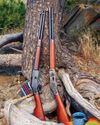
CIMARRON .32-20 Short Rifle & Carbine
In the heyday of Winchester Repeating Arms Company lever guns, it offered muskets, standard rifles, short rifles and saddle ring carbines.
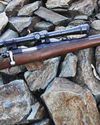
Remington's Model 722 and .222 Cartridge
It's easy enough to define what a varmint is, those pesky critters that tear up pastures, flower beds and all kinds of expensive crops people need for various reasons - most importantly, to make a living and/or something with which to feed themselves.

Coyote Bullets
What is Best for You?
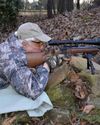
Remington's 5mm Rimfire Magnum
Shooting a Classic
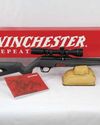
Winchester's New Wildcat
The Ultralight Rimfire Varmint Rifle

.223 Remington from .30-30 Winchester?
Multitasking for Varmints

LOADS FOR A .22 TCM
The .22 TCM first appeared commercially in 2012, chambered in a Rock Island Armory 1911-style handgun.
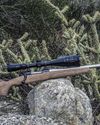
Everybody Loves Velocity
The 4,500-fps WSSM Project

A BOLT-ACTION FRANCHI 224 VALKYRIE
Testing New Loads
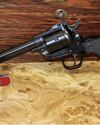
.22 Winchester Magnum Rimfire
Shooting Revolvers